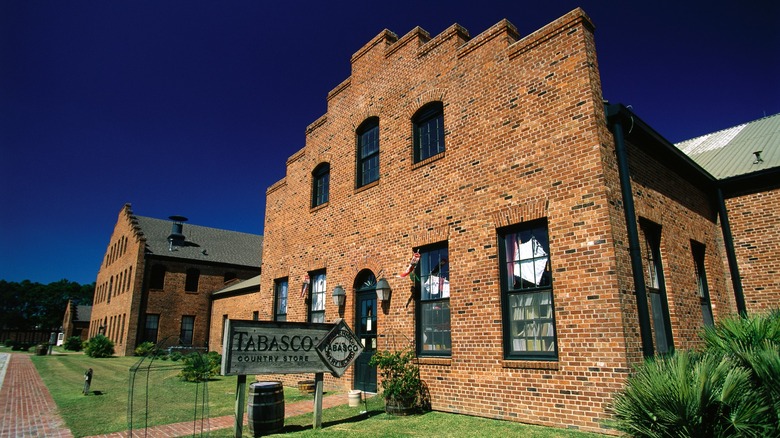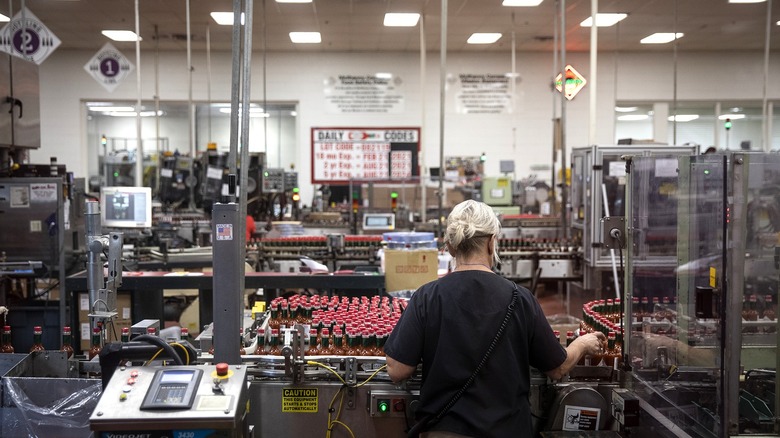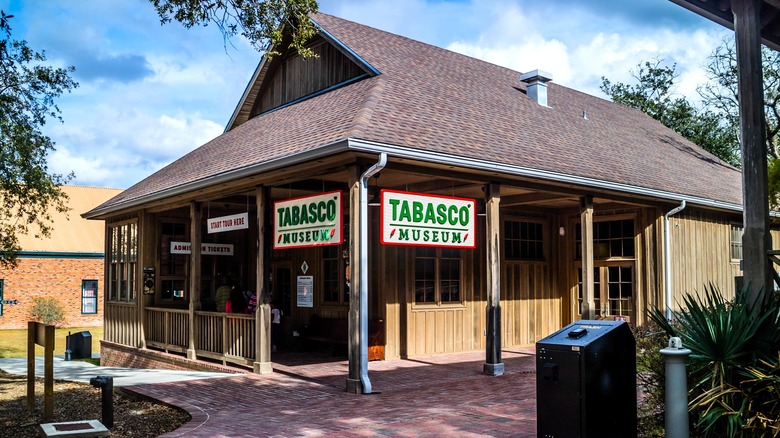Explore The Birthplace Of Tabasco Hot Sauce At A Wildly Underrated Louisiana 'Island'
Avery Island, set amongst the swamps and marshes of the Louisiana coast, not only sits on a salt dome believed to run as deep as Mt. Everest is tall, it's home to one of America's most remarkable family businesses. In 1868, Edmund McIlhenny used his first pepper crop to develop Tabasco Original Red Pepper Sauce, a sharp, spicy condiment that works on meat, eggs, seafood, and just about everything. He quickly established the McIlhenny Company and sold his piquant sauce across America and the world. By the 20th century, the sauce had transcended global success to become a ubiquitous household name.
Today, Tabasco is labeled in 36 languages and sold in over 195 countries and territories. But despite that tremendous growth, the McIlhenny Company remains an entirely independent, family-run business. We visited this unique Southern institution a few springs ago and, as committed spice lovers, greatly enjoyed the pilgrimage. Avery Island is about 140 miles west of New Orleans — a vibrant adult playground of unique entertainment — and the site provides broad access to its barrel stores, bottling plants, and 170-acre Jungle Gardens. It's also near Lafayette, one of the best places to experience Cajun culture.
The business of Tobasco
Every single bottle of Tabasco in shops and pantries around the world comes from Avery Island. Workers produce over 700,000 bottles here every day, and visitors can see the production line for themselves, complete with a matrix sign counting each passing bottle. During our visit, the production line had already hit 141,549 for the day.
Each of the 720 drops in every standard Tabasco bottle is the result of pepper mash that's barrel-aged for three years before undergoing a 28-day vinegar distillation and final straining process. During our visit, we followed a powerful, spicy aroma to a warehouse with rows of white oak barrels stacked almost to the rafters. It was like breathing smelling salts, only spicier.
According to Coy Boutte, a Tabasco veteran who was born and raised on the island, the barrel warehouse contains around 73,000 barrels, of which 20,000 to 22,000 go into production every year. These hard-wearing barrels typically last up to 40 years, although some are as old as 90.
Museum, restaurant, and gardens
The visitor experience begins in the Tabasco Museum, where visitors buy tickets before navigating an exhibit of the brand's remarkable history. The company's story is illustrated through a collection of family artifacts — clothes, tools, personal effects — and snapshots of Tobasco's many appearances in film, TV, and wider popular culture in the 20th and 21st centuries.
After you've perused the museum and the Tabasco production buildings, you may decide to visit the Jungle Gardens. You won't want to swim in the alligator-infested waters, but there's plenty to see. This botanical garden and wildlife refuge contains 170 acres of ancient oaks, beautiful bamboo groves, rare jungle flora, scores of turtles, waterbirds, mammals, and a 900-year-old Buddha housed in a temple surrounded by camellias and azaleas.
If you visit between 10:30 AM and 2:30 PM, consider treating yourself to lunch at the 1868 restaurant. The menu has many Cajun and regional favorites, including boudin eggrolls, crawfish pie, po'boys, gumbo, and etouffee. Real spice enthusiasts can book the Acadiana culinary experience, which grounds visitors in local food culture with six tastings and a Bloody Mary flight. There's also a cooking demo that pairs a Tabasco recipe tutorial with a four-course meal.


